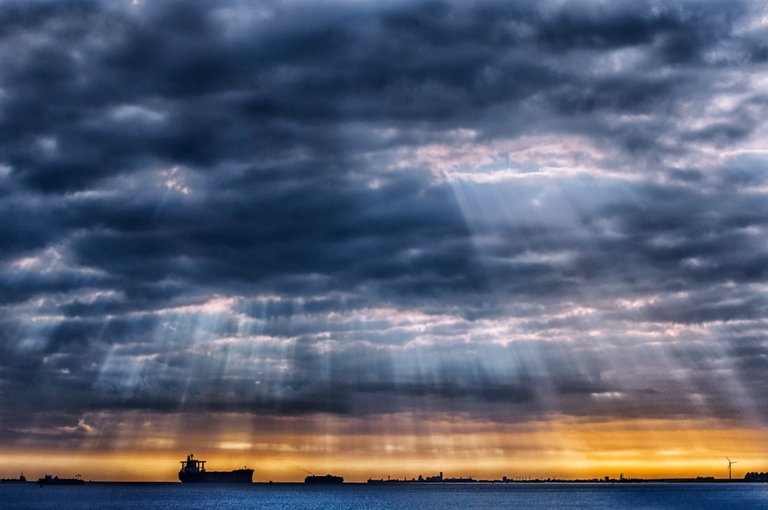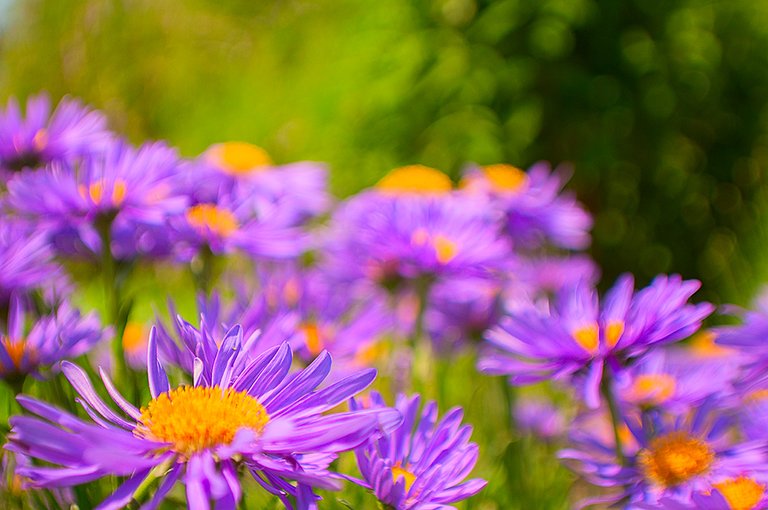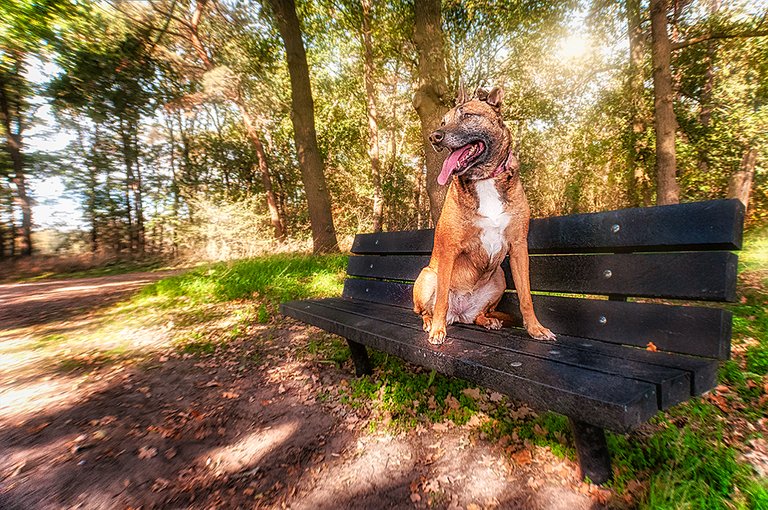Wide Angle Photography Tutorial ... My entry for Qurator Photo Quest
When I saw the Qurator Photo Quest this week with the theme : Wide Angle, I immediately thought that it could be a nice topic to write a tutorial again. It's been a long time since I did one. So here it is!
This can be done differently!
If you look at the wish lists of most people, there is especially the desire for bright lenses that can zoom further and further to fill the image as much as possible. And that is also a reason why you often see photos of one and the same kind of many people.
But what if you take a wider look through the range of lenses. Literally.
The wide angle lens is one of the great secrets of photography.
If you really want to take your photography to the next level, a wide-angle lens cannot be missing from your camera bag. From landscapes to weddings, architecture, photojournalism and even for macro, the lens is often perfect for use, thanks to the extremely short focusing distance and the great sharpness.
What about the good old 18 - 55mm kitlens?
Now to think that this is an expensive joke right away is not always the right idea. Often the cameras you buy come with an 18-55mm kit lens. And no indeed, these are not bright lenses, and the angle could be a bit wider. But with this kitlens you are already pretty close, and you can already start experimenting if wide-angle photography is for you!
Don't forget you have two feet!
What usually happens is that most novice photographers usually use the lens at 55mm, and forget the widest angle, 18mm. This is due to the fact that most people shoot from a great distance. And if you keep a long distance with photography, you should quickly zoom in to make your subject somewhat full-screen. Where an ancient photography wisdom of Magnum photographer Robert Capa is forgotten. "If you're pictures aren't good enough ... You aren't close enough!" Which really means nothing else like ... Use those feet you have and get closer to your subject! No one needs a zoom lens to get closer to the subject. Every person has two feet that can take you there.
Place your subject in natural environment
If this applies to something, then it is for photography with a wide-angle lens. If you are too far away, you take a photo with a lot of "dead space". Parts of a photo in which nothing happens. Due to the wide angle, subjects that you photograph from a great distance are relatively small compared to the surroundings, so it is important to get close. You will be amazed at how close this can be, almost to the level of macro photography. You have to keep in mind that the magnification factor is not really very strong, but this can fit just fine if you want to place a subject in the (natural) environment.
Wide Angle forces you to get to the action
The lens almost literally forces you to get close to the action. An ideal subject for this is, for example, your pet. This is familiar with you and therefore usually allows you to get very close. If you then take a photo at the same level as your pet, you will see that you are sucked into his experience. And this is where the reputation comes from that a wide angle can draw the viewer into the action, "in my face".
Place the horizon at the very bottom and give full attention to the sky
It is not for nothing that a wide-angle lens is very much used by photojournalists who have to create maximum impact and drama in small spaces to get the photo on the front page. But this also applies to landscapes. Brilliant cloudy skies are further emphasized by placing the ground at the very bottom of the image and giving full attention to the sky. Like I did in the first photo.
Look for ways to fill your image, create depth!
Because you have so much space, you have to look for ways to properly fill your image and create depth. A good landscape photo has a foreground subject to draw the eye into the background subject and also to take full advantage of the enormous depth of field. If you look back at the mnemonic that the shutter speed is ideally at least 1 / mm from the lens, then with a wide-angle lens you have the possibility to deliver sharp photos at 1/30. Although this also depends on how stable your hand is.
Because the lines due to the curvature of the lens distort more than with other lenses (but not as strong as with a "fisheye" lens) it all looks a bit more bizarre. But this also adds to the drama possibilities of the lens.
There are disadvantages for wide angle.
Note, a wide angle also has some disadvantages. For example, the angle at which you photograph is much larger, so you have to pay attention to what is in your image. You will not be the first to see his own feet. Also consider the conversion of the lens. If you point it up or down for a moment you will see that straight lines warp in the edges. Very striking, for example, if you have lampposts in the corners. There is also a danger in the bulge when you photograph people. If you don't pay attention, you just make sure that someone gets a much bigger nose than in real life. This is often not appreciated by your model. In the photo above, I just used the effect to make Myla her nose extremely long and large in relation to her head. She didn't mind ...
Using filters
Another drawback you see with filters. Due to the extreme angle, you run a faster chance of "vignetting", edges in the image, especially if it concerns multiple filters that are on top of each other, then you quickly have an edge in the widest position. These do not necessarily have to be dark black edges, but can be a fairly subtle circle (sometimes it is also very nice to add this yourself to point the viewer even more at the subject). Also think of sun hoods that are sometimes just on the edge. A lens hood is important, by the way, because of the large angle you are also more likely to have lens flare in the image, reflections in the lens from incident light. Although I can find the latter very beautiful and just look for it to get it in my photo ...




A good write up and interesting
Thank you ... it's always good to think out of the box and especially when you talk in terms of photography. Many people are kind of stuck in their photography because they feel they don't own 'the right' lens. It doesn't have to be that way, just think a bit different.
not always; not only if you area train driver who is "looking for some new ways" :)))
awesome read, tnk you for the efforts!
Thank you for the compliments